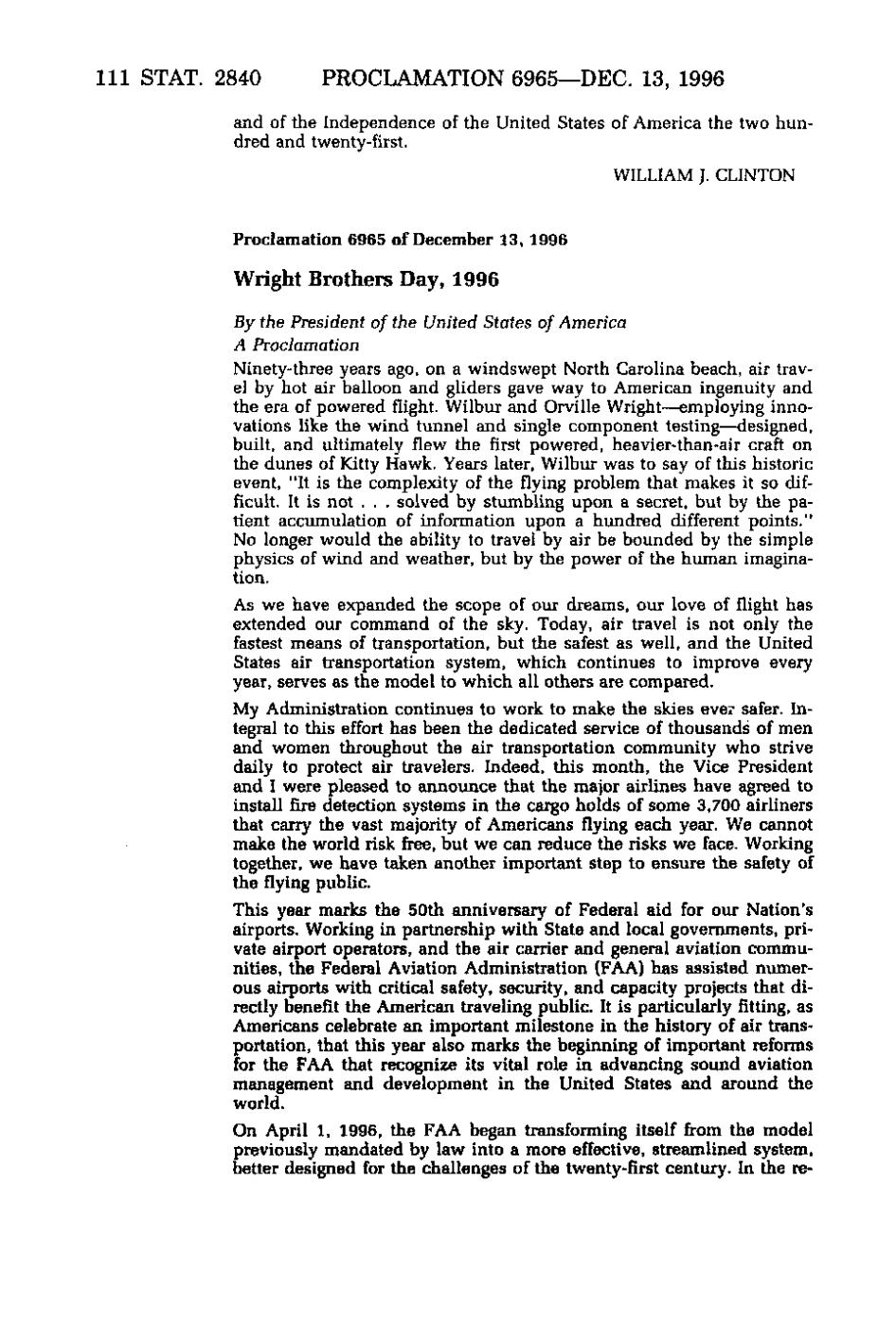Ill STAT. 2840 PROCLAMATION 6965—DEC. 13, 1996 and of the Independence of the United States of America the two hundred and twenty-first. WILLIAM J. CLINTON Proclamation 6965 of December 13, 1996 Wright Brothers Day, 1996 By the President of the United States of America A Proclamation Ninety-three years ago, on a windswept North Carolina beach, air travel by hot air balloon and gliders gave way to American ingenuity and the era of powered flight. Wilbur and Orville Wright—employing innovations like the wind tunnel and single component testing—designed, built, and ultimately flew the first powered, heavier-than-air craft on the dunes of Kitty Hawk. Years later, Wilbur was to say of this historic event, "It is the complexity of the flying problem that makes it so dif- ficult. It is not... solved by stimibling upon a secret, but by the patient accumulation of information upon a hundred different points." No longer would the ability to travel by air be bounded by the simple physics of wind and weather, but by the power of the human imagination. As we have expanded the scope of our dreams, our love of flight has extended our command of the sky. Today, air travel is not only the fastest means of transportation, but the safest as well, and the United States air transportation system, which continues to improve every year, serves as the model to which all others are compared. My Administration continues to work to make the skies ever safer. Integral to this effort has been the dedicated service of thousands of men and women throughout the air transportation community who strive daily to protect air travelers. Indeed, this month, the Vice President and I were pleased to announce that the major airlines have agreed to install fire detection systems in the cargo holds of some 3,700 airliners that carry the vast majority of Americans flying each year. We cannot make the world risk free, but we can reduce the risks we face. Working together, we have taken another important step to ensure the safety of the flying public. This year marks the 50th anniversary of Federal aid for our Nation's airports. Working in partnership with State and local governments, private airport operators, and the air carrier and general aviation communities, the Federal Aviation Administration (FAA) has assisted numerous airports with critical safety, security, and capacity projects that directly benefit the American traveling public. It is particularly fitting, as Americans celebrate an important milestone in the history of air transportation, that this year also marks the beginning of important reforms for the FAA that recognize its vital role in advancing sound aviation management and development in the United States and around the world. On April 1, 1996, the FAA began transforming itself from the model previously mandated by law into a more effective, streamlined system, better designed for the challenges of the twenty-first century. In the re-
�
